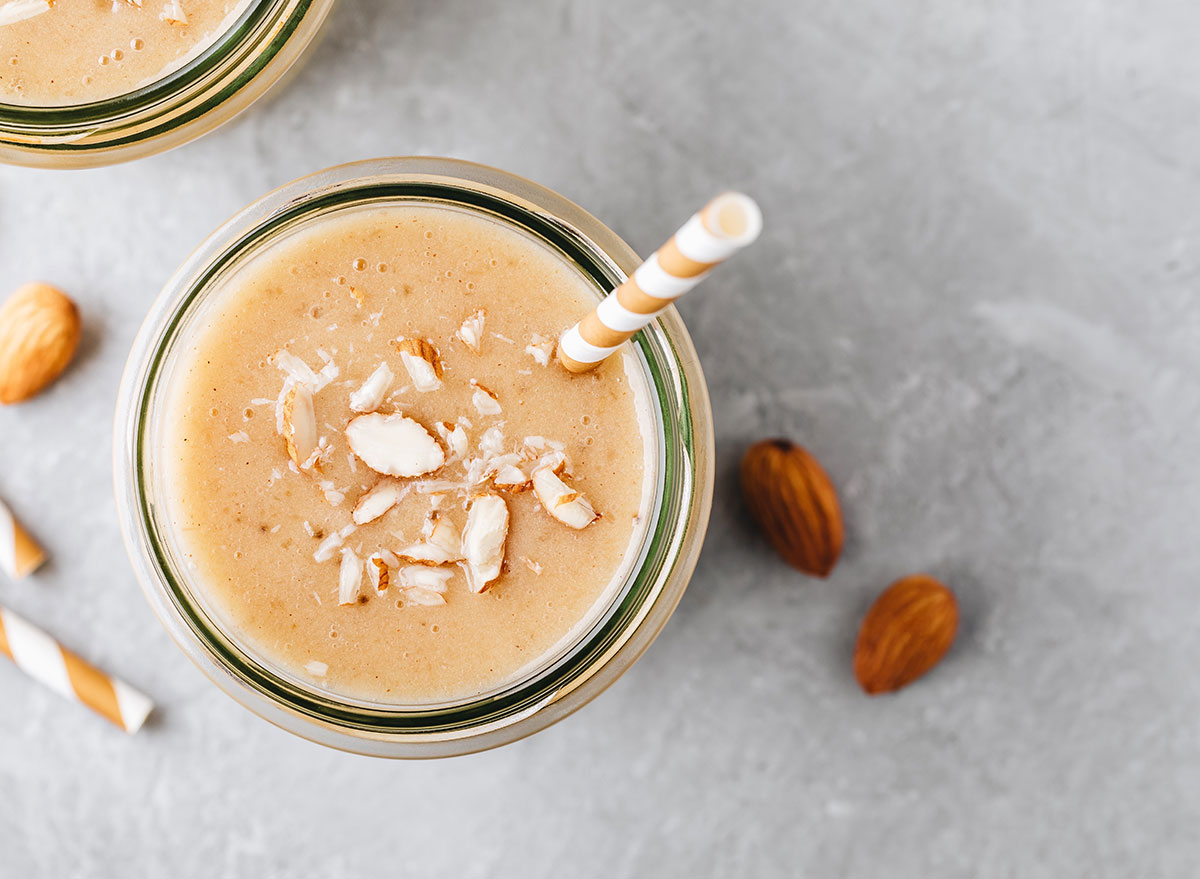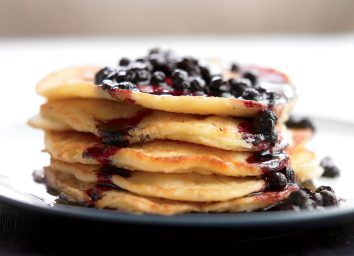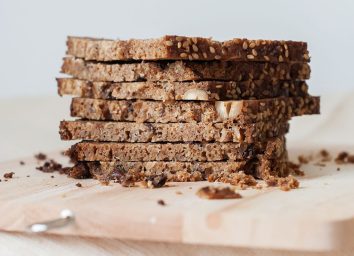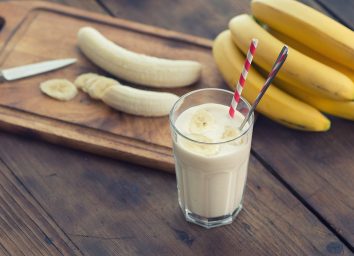Here’s Exactly How to Build the Perfect Protein Shake for Breakfast

We’ve all been there—a busy morning meant you didn’t have time to eat breakfast. Protein shakes are known to be a great meal replacement, especially on the go, because they help keep you full and focused. But is it OK if that meal is breakfast? We asked a registered dietitian everything you need to know about how to incorporate protein shakes (and smoothies!) into your routine, and what it takes to make the perfect protein shake for breakfast.
Are protein shakes good to have for breakfast?
“Some people love a shake for the convenience,” says Lauren Minchen, MPH, RD. “It’s easy to bring with them and they can throw a bunch of stuff in it and get a bunch of nutrients at one time.” Studies have proven that the protein can help control hunger because it moves through the digestive system slower than carbohydrates. This means less pre-lunch stomach growls and snacking, so it can also help with lower calorie intake and weight loss.
What should they include?
20-30 grams of protein
Of course, the benefits of having a protein shake for breakfast depending on what’s in it. At least 20-30 grams of protein should be added, says Minchen. That’s about one or two scoops, depending on the brand and type of protein you’re using.
“I personally love collagen,” says Minchen. “That protein has shown to be tremendously helpful for our guts, skin, hair, and nail health.” Plus, it’s dairy-free, gluten-free, and blends well, adding in a smooth texture to the shake. Whey and plant-based proteins, like pea protein, are also great options. Need help shopping for one?
10-20 grams of healthy fats
You can use a healthy fat in the form of the following:
- nut butter
- ghee
- coconut oil
- MCT oil
- avocado
- full-fat Greek yogurt
- flax oil
Full-fat Greek yogurt is an excellent source for both the healthy fat and protein, while also keeping the shake creamy, says Minchen. Flax oil is another great addition, as it contains omega-3 fatty acids.
Fruits and vegetables
Adding in some carbohydrates to the shake is an easy way to boost the nutritional value.
You can try adding in:
- fruits
- leafy greens
- vegetables
A cup or two of fruit should also give you all the sweetener you need, without having to add any honey, maple syrup, or sugar. Spinach is a great addition because it blends well and won’t add a bitter flavor. Minchen says a green powder is also another way to get green nutrients in.
These serving suggestions should make about two to three cups, a great amount for a meal replacement shake.
Tips for making healthy protein shakes
Don’t forget to add in a healthy fat. “The fat and the protein helps to slow down how quickly you absorb the carbohydrates,” Minchen says. Without the fat, the carbs will cause the blood sugar to spike and then fall rapidly, making you hungry again.
She notes that many people mistake using almond milk for protein. “Almond milk has only one or two grams of protein per cup actually,” Minchen notes. “It’s important to add a full protein powder, or like I mentioned, Greek yogurt, to get your full protein.”
Do figure out how much protein you should have each day by multiplying your weight in kilograms by 0.8. The answer is the amount in grams. Depending on the answer, you should be able to get a good amount of your daily protein from a breakfast protein shake.
Because protein shakes can be customized with different milks, nut butters, and protein flavors, do try out options to see what you like and what makes you feel the best. Minchen says her go-tos include cocoa powder, almond or cashew milk, a little bit of stevia, and a nut butter like pecan or cashew.








